#lata mangeshkar hits songs
Explore tagged Tumblr posts
Text
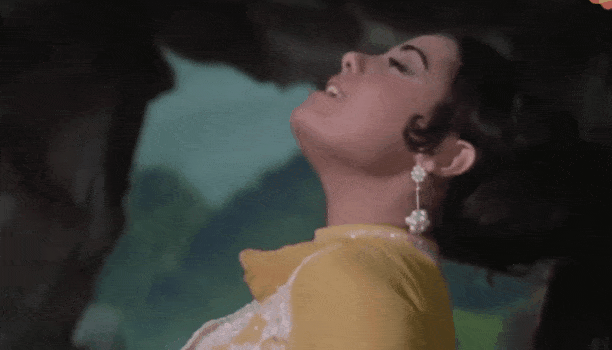
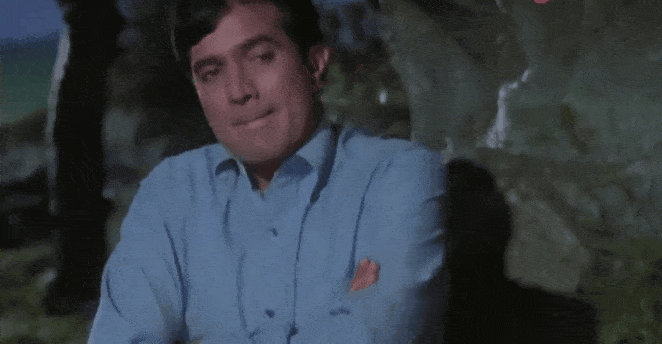
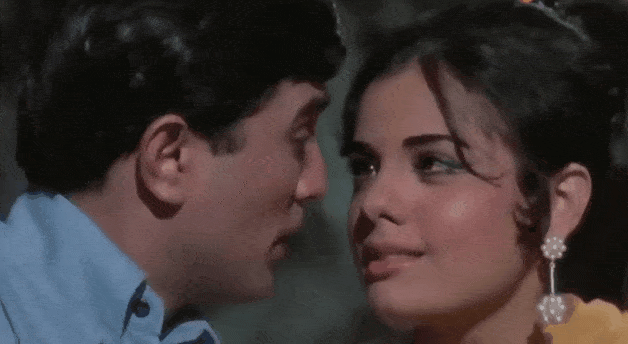
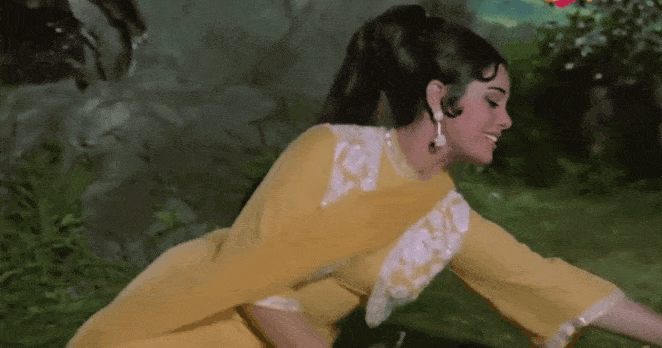


तेरे होंठो पे रात ये बहाना था
गोरी तुझको तो आज नहीं आना था
#bollywood#vintage#classic#retro#evergreen#hindi cinema#mumtaz#rajesh khanna#beautiful#lata mangeshkar superhit songs#lata#mohd. rafi#mohd rafi hit songs#do raaste
15 notes
·
View notes
Text
लता मंगेशकर की पहली पुण्यतिथि
भारत की कोकिला लता मंगेशकर का 6 फरवरी 2022 को उनकी पहली पुण्यतिथि के अवसर पर निधन हो गया। 1929 में जन्मी, वह भारतीय फिल्म उद्योग में सबसे प्रभावशाली और प्रतिष्ठित पार्श्व गायिकाओं में से एक थीं। आठ दशक से अधिक के करियर के साथ, उन्होंने कई भाषाओं में हजारों गाने रिकॉर्ड किए और एक सांस्कृतिक प्रतीक बन गईं। मंगेशकर ने 1942 में मराठी फिल्म “किटी हसाल” से अपने गायन करियर की शुरुआत की और दुनिया में…
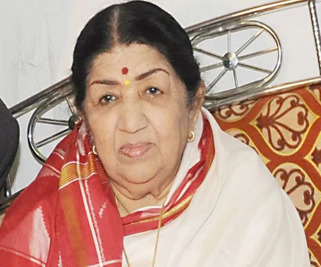
View On WordPress
#biography of lata mangeshkar#lata mangeshkar age#lata mangeshkar award#lata mangeshkar biography#lata mangeshkar chowk#lata mangeshkar death#lata mangeshkar death age#lata mangeshkar death date#lata mangeshkar hit song#lata mangeshkar mp3 song#lata mangeshkar news#lata mangeshkar songs#lata mangeshkar wiki#short biography of lata mangeshkar
0 notes
Text
Lata Mangeshkar & Udit Narayan - Are Re Are 1997
Dil To Pagal Hai (The Heart Is Crazy) is a 1997 Indian Hindi-language musical romance film directed by Yash Chopra. The film stars Shah Rukh Khan, Madhuri Dixit, Karisma Kapoor and Akshay Kumar. Made on a budget of ₹90 million (US$2.48 million), which includes print and advertising costs, Dil To Pagal Hai grossed over ₹710 million (US$19.55 million) worldwide, becoming the highest-grossing film of the year.
The soundtrack of Dil To Pagal Hai includes 10 songs. The songs for the film were composed by Uttam Singh, while the lyrics were written by Anand Bakshi. Most of the songs were sung by Lata Mangeshkar and Udit Narayan. The music was a major hit among the audience, with the album becoming the best-selling Bollywood soundtrack of the year and second-most of the 1990s decade, with 12.5 million soundtrack album sales.
"Are Re Are" received a total of 65,2% yes votes! Previous polls for this film: #141 "Bholi Si Surat".
youtube
#finished#high yes#low reblog#90s#o2#o2 sweep#lo1#lo3#soundtracks#lata mangeshkar#udit narayan#hindi
331 notes
·
View notes
Text

Tribute to Saraswati Devi, the first woman music director in Hindi films, on her 44th death anniversary (09/08/1980).
Born in a Parsi family in 1912, Saraswati Devi was a trained classical singer and rose to become India’s first woman music director of Bollywood.
A musical rage in the 30s and early 40s, Saraswati Devi's musical career was mostly confined to films produced by Bombay Talkies. Starting with 'Jawani Ki Hawa' in 1935, she went on to compose highly popular music for hit films like Achhut Kanya, Kangan, Bandhan and jhoola.
She was born as Khursheed Manchersher Minocher – Homji.
She changed her name to escape the wrath of the conservative elements of her community as they could never stand that a lady from their clan would enter the film world.
Once when at a gathering the Bombay Talkies owner Himanshu Rai heard her, he instantly invited her to join his concern as a music director. She was reluctant at first, not knowing how she would adjust herself to the needs of the film industry. But finally she accepted the offer.
She was the first woman music director no doubt. But the biggest challenge she faced was to groom non-singers into singers. That was a very, very big challenge in view of the competition from New Theatres as she didn’t have a Saigal or a Kanan to sing her compositions. That is why one should say that she had a formidable task to perform unlike her counterparts like R.C.Boral, Tamir Baran and others in Calcutta.
The biggest contribution by Saraswati Devi, therefore, was to produce hit songs through the lips of non-singers like Ashok Kumar, Devika Rani and Leela Chitnis.. Right from Achchut Kanya till Jhoola, Saraswati Devi went on rampage, so to speak, producing one hit after another. Leela Chitnis could sing hit songs like, ‘Meera ke jeevan ki sooni parri re sitar’ (Kangan), ‘Man bhavan lo sawan aya re’(Bandhan) and ‘Jhoole ke sang jhoolo jhoolo mere man’.(Jhoola) Imagine Saraswati Devi producing a golden jubilee hit in the voices of Ashok Kumar and Devika Rani in film ‘Achhut Kanya’ (a film that Nehru saw and appreciated)-‘Main ban ki chirriya ban ke ban ban bolun re’. The biggest hit by her was the marching song of Bandhan, ‘Chal chal re nau jawan’ sung in solo by Ashok Kumar, sung in chorus by Ashok Kumar and sung as a duet by him with Leela Chitnis. She used a non-singer like Sneh Prabha to sing the Puner Milan song, ‘Nacho nacho pyare man ke mor’. The male singer she had was Arun Kumar, who sung for Kishore Sahu in Punermilan, for Mumtaz Ali in ‘Jhoola’ (Main to Dilli se dulhan laya re he babuji) and others. Incidentally, it was she who gave break to Kavi Pradeep as a singer though he was writing lyrics for the concern since 1939 from film ��Kangan’. She first used him in that immortal song of ‘Bandhan’ which is played in the back ground: ‘Piyu piyu bol praan papeehe piyu piyu bol’ Pradeep did sing subsequently some big hits after leaving Bombay Talkies. But in ‘Jhoola’ he has left behind a memorable song too tuned by Saraswati Devi: ‘Mere bichade hue saathi teri yaad sataye, baar baar teri chavi aye birha agan jaraae’
After she left Bombay Talkies, she shot into limelight again in the early fifties when she tuned two non-film ghazals for Habib Wali Mohammad. These were: ‘Lagta nahin hai dil mera ujjarre dayar mein’ and ‘Yeh na thi hamari kismet ke visaal-e-yaar hota’. When you listen to her compositions, specially the indigenously-flavored background music, you are transported into the environment of the India of the early 20th century.
During the later years of her life, the bad and selfish film world turned apathetic towards the doyenne. Not even a single person visited her when she fractured her hip bone after falling from a private bus. The legendary singer and India’s first female music director left for a better world in 1980 with no one to mourn her death. Even the media did not find her worthy of an obituary. Image: Saraswati Devi, Lata Mangeshkar, Madan Mohan, Jaikishan, Anil Biswas and Naushad
5 notes
·
View notes
Note
stars and raindrops by seungmin ( in my mind it's practically Your Song) and lag ja gale se phir by Lata Mangeshkar (slow song for rainy nights + a song rec for you ( ╹▽╹ ) )
ooooh high compliment, thank you 🥺 this is such a lovely song, too 💗
3 notes
·
View notes
Text

Transport yourself to a bygone era with timeless melodies! Revisit the golden age of Bollywood with our curated collection of super hit old hindi songs mp3 free download. Relive the magic of Lata Mangeshkar's soul-stirring vocals or Kishore Kumar's enchanting tunes. Immerse yourself in the lyrical beauty of classics that have stood the test of time. Rediscover the joy of melodies that continue to resonate with generations. Dive into the musical treasure trove and download your favorite tracks effortlessly. Let the melodies of yesteryears accompany you on a nostalgic journey through the heart of Hindi cinema."
2 notes
·
View notes
Text

Explore the timeless charm of Bollywood's golden era with our curated collection of super hit old hindi songs mp3 free download in high-quality MP3 format. Immerse yourself in the soulful melodies and unforgettable lyrics that defined an era of cinematic brilliance. From Lata Mangeshkar's ethereal vocals to Kishore Kumar's iconic tunes, this treasure trove encapsulates the essence of classic Hindi cinema. Rediscover the magic of evergreen hits that have stood the test of time, transcending generations. Indulge in nostalgia and relive the beauty of vintage Bollywood with our extensive selection of super hit old Hindi songs, all easily accessible for a musical journey down memory lane.
5 notes
·
View notes
Text
CRINGE BUT TRUE
After I realized he didn’t love me, I completely lost it. I’m not even exaggerating—if someone made a documentary about my meltdown, it would win an Oscar for “Most Unhinged Drama.” Let me walk you through my madness.
1. Became a Mastermind Spy
I created not one, but three fake Instagram accounts. One was a “sugar mommy” who loves gym boys and pizza, another was a distant cousin who’d “accidentally” found him, and the third? A guy who might slide into his DMs to make him jealous. I had full-blown conversations with myself in the comments to make them look real. Honestly, I could’ve worked for the CIA.
2. Wrote Him a Love-Hate Novel
I sat down to write him a letter to tell him how much I hated loving him, but it turned into an 87-page manifesto. I detailed every moment he made me smile, every glance that made me think he cared, and then aggressively ripped him apart for ruining my life. I ended it with, “You’ll regret this.” I printed it, tore it into shreds, and then burned it in a saucepan. My room smelled like betrayal for three days. I EVEN WROTE HIM URDU LOVE POEMS.
3. Practiced a Breakup Speech That Never Happened
I spent DAYS rehearsing the perfect breakup speech. I stared into the mirror, tears streaming down my face, and said things like, “You’ll miss me when you realize no one else can love you like I did!” I even recorded myself to make sure my voice cracked at the right moment for maximum effect. Spoiler alert: he never even got to hear it.
4. Made a Crying Playlist So Depressing, Even Spotify Judged Me
I curated a playlist titled “He Never Deserved Me Anyway.” It had every sad song you can think of—Adele, Taylor Swift, Lana Del Rey, Lata Mangeshkar. I’d cry for hours, hitting repeat on the saddest lines like, “I’ll never love again!”
5. Tried to Hex Him
Listen, I’m not proud of this, but I Googled how to cast a hex. I wrote his name on a piece of paper, circled it with salt, and whispered, “You’ll stub your toe every morning until you apologize.” When nothing happened, I decided the universe was clearly taking his side.
6. Became a Social Media Stalker on Steroids
I zoomed into every picture he posted. Who’s that in the reflection of his sunglasses? Why is there a pink jacket in the background? Is that a new girl in his following list? I had notes, screenshots, and conspiracy theories. Honestly, I was one step away from creating a crime board with string.
7. Sent Him Cryptic Messages
I texted him, “Hope you’re happy now :)” and then blocked him before he could reply. A week later, I unblocked him just to send, “Funny how people change” and blocked him again. The chaos fueled me. I TEXTED HIM FOR DAYS SINCE HE SAID HE,LL FUCKING FIX IT… PROCEEDING TO REMOVE ME FROM HIM CONTACTS AND FOLLOWERS
8. Tried to Become a “New Me” Overnight
I decided I’d make him regret everything by becoming the best version of myself. I cut bangs at 2 a.m., signed up for a pottery class even though I hate getting dirty, and bought clothes that were way out of my comfort zone. The next morning, I looked in the mirror and sobbed because the bangs looked FUCKING AMAZING.
9. Went Full Detective Mode
I dug deep into his social media. I checked the tags, likes, and comments. I even found his mom’s account and scrolled way back to her vacation pictures from 2015 to see if she’d ever posted about “the kind of girl he should date.” For the record, she hadn’t.
10. Talked to the Moon Like It Was My Therapist
One night, I went outside, stared at the moon, and said, “Why did you let me love him? What was the point?” I actually felt like the moon was judging me, so I yelled, “Don’t you dare look at me like that!” My neighbors turned their lights on, but I was too far gone to care.
Looking back, I realize I’m not just brokenhearted—I am a full-blown disaster. But honestly? I kind of need it. Chaos is my therapy, and even though I wouldn’t recommend this to anyone, I think it helps me let go. Or at least, I stopped Googling hexes. Progress, right?
#men are stupid#men are trash#men are worthless#men are the worst#men are inferior#men are the problem#men are weak#men are weird#love is a poison#love#obsessive love#i love him#i'm sad#sadgirl#actually obsessive#obsessivecore#obsessive thinking#obsessive thoughts#obsessive daydreaming#i hate men
1 note
·
View note
Text
The Genius of Pritam: Bollywood's Musical Maestro
Pritam Chakraborty, widely known simply as Pritam, has carved a niche in Bollywood music that resonates with innovation and versatility. The musical landscape of Indian cinema has been profoundly influenced by his compositions, making him one of the most sought-after music directors in the industry. His journey from a music enthusiast to a hitmaker is a tale of passion and perseverance. Pritam's unique ability to blend Western musical elements with traditional Indian sounds has set new trends in Bollywood music.
Collaborations That Defined a Generation
Pritam's collaborations with prominent Bollywood singers have resulted in some of the most memorable songs of the past two decades. Working with Arijit Singh, Pritam has delivered chart-topping hits that highlight Arijit's soulful voice and Pritam's nuanced musical arrangements. Their collaborations are often seen as benchmarks for musical excellence in Bollywood.
Female Voices in Pritam's Melodies
Pritam has also harnessed the vocal prowess of legendary female singers such as Alka Yagnik and Lata Mangeshkar. Alka's expressive singing paired with Pritam's melodies has brought to life songs that have touched the hearts of millions. Similarly, Lata Mangeshkar's collaboration with Pritam, though rare, showcased how contemporary music directors still lean on the timeless voice of Mangeshkar to create musical magic.
A Legacy of Timeless Songs
Pritam's impact is not limited to new voices; he has also worked extensively with Anuradha Paudwal, another revered name in the Indian music industry. Anuradha's spiritual and film songs under Pritam's direction have enjoyed widespread acclaim, demonstrating his versatility and ability to tailor his music to suit the singer's style and the film's tone.
Innovation and Awards
Throughout his career, Pritam has been recognized with numerous awards for his contribution to music. His approach to music production, which often involves a fusion of genres and the incorporation of international music styles, has not only won him accolades but also a global fanbase. His soundtracks consistently top the charts and set the mood for blockbuster Bollywood films, making him a pivotal figure in shaping contemporary Bollywood music.
The Future of Bollywood Music
As Bollywood continues to evolve, Pritam's role in shaping its musical direction remains undeniable. With each new film, he experiments with sounds and styles, pushing the boundaries of what Bollywood music can be. His ongoing quest to innovate ensures that Bollywood will continue to enchant audiences with melodious surprises.
Pritam's legacy is a testament to his enduring passion for music and his unyielding commitment to excellence. Aspiring musicians and composers look up to him, not just for his achievements, but for his ability to adapt and thrive in the ever-changing landscape of Indian music. His story encourages future generations to dream big and persevere, much like the legends Arijit Singh, Alka Yagnik, Lata Mangeshkar, and Anuradha Paudwal have in their illustrious careers.
0 notes
Text
5 Apps That Bring Music to Your Fingertips
Music has become an integral part of our lives, helping us relax, focus, or energize throughout the day. With the advent of smartphones and music streaming apps, accessing our favorite tunes has never been easier. Whether you're into retro classics, modern hits, or curated playlists, there’s an app tailored to your needs. Let’s explore five outstanding music apps that redefine convenience and quality in music streaming.
1. Airtel Wynk App: A Hub for Every Music Lover The Airtel Wynk App is a game-changer for Indian music enthusiasts. Designed to cater to a wide range of listeners, Wynk offers access to millions of tracks spanning various genres and languages. What sets this app apart is its seamless integration with Airtel network plans, allowing users to enjoy music without additional data charges.
Features like personalized playlists, offline downloads, and high-quality audio enhance the user experience. Wynk also supports podcasts and live streaming, ensuring that users are never out of options. Whether you're a casual listener or someone who enjoys exploring regional music, this app has you covered.
2. Saregama Music Company: A Treasure Trove of Timeless Classics For fans of vintage music, the Saregama Music Company is a goldmine. Known for its rich collection of classical, retro, and devotional tracks, Saregama preserves the essence of Indian musical heritage. The platform is ideal for those who cherish the golden voices of legends like Lata Mangeshkar, Kishore Kumar, and Mohammed Rafi.
Saregama Carvaan, their flagship product, comes preloaded with thousands of classic tracks, making it a perfect gift for elders or anyone who loves old-school music. Additionally, their app offers a user-friendly interface, allowing users to browse, create playlists, and enjoy uninterrupted streaming of their favorite timeless hits.
3. Wynk Music Subscription: Premium Features at a Budget If you’re looking for an affordable yet premium music experience, the Wynk Music Subscription is worth exploring. With this subscription, users can unlock a host of exclusive features such as ad-free music, offline playback, and access to curated playlists. The subscription is reasonably priced, making it accessible to a wide audience.
Wynk Music also stands out for its focus on personalization. Based on your listening habits, the app suggests songs and playlists tailored to your preferences. Whether you're in the mood for Bollywood beats, international pop, or soulful ballads, Wynk Music ensures a delightful experience without interruptions.
4. YouTube Music Premium Student: Affordable Plans for Young Minds The YouTube Music Premium Student plan is a boon for students who want access to premium features at a reduced cost. This plan offers all the benefits of YouTube Music Premium, including ad-free streaming, offline downloads, and background play.
The app’s extensive library spans global hits, regional music, and trending playlists. Its unique feature of syncing music videos with songs ensures an immersive experience. For students juggling academics and leisure, the affordability and convenience of this plan make it a top choice.
5. Apple Music Subscription Cost: Premium Sound Quality for Audiophiles Apple Music is synonymous with quality and exclusivity, offering a comprehensive music streaming experience. While the Apple Music Subscription Cost might appear steep compared to other services, the features justify the price. Audiophiles will appreciate the app’s support for high-resolution, lossless audio formats, which deliver unparalleled sound quality.
Beyond music, Apple Music provides access to exclusive artist content, live radio stations, and curated playlists. Its integration with the Apple ecosystem allows seamless usage across devices. Whether you're an iPhone user or someone who values premium services, Apple Music is a compelling choice.
Conclusion Music streaming apps have revolutionized the way we access and enjoy music. From personalized playlists and affordable student plans to timeless classics and high-resolution audio, these platforms cater to diverse preferences. Whether you choose the budget-friendly Wynk Music Subscription, the nostalgic collection of Saregama Music Company, or the premium offerings of Apple Music, there’s an app for every music lover.
As music continues to evolve, these apps ensure that our favorite tunes are always within reach. Explore these platforms today and elevate your listening experience.
0 notes
Text
Rediscovering the Roots of Indian Music in a Digital Era
India’s music is deeply rooted in its rich cultural heritage, blending classical ragas, folk melodies, and devotional hymns. However, in an age dominated by modern sounds and global influences, traditional Indian music risks being overshadowed.
Thankfully, technology is stepping in to bridge the gap between past and present. Digital platforms and tools are helping listeners rediscover India’s musical roots while also providing artists with new ways to preserve and promote traditional music. From apps like Saregama to streaming services, the digital era is giving India’s music legacy a fresh lease of life.
Music Streaming Services: Preserving Diversity
In a country as diverse as India, music streaming services like JioSaavn and Spotify play a pivotal role in showcasing regional and classical music alongside contemporary tracks. These platforms often feature curated playlists celebrating the vibrancy of India’s musical heritage, from Carnatic ragas to Baul folk songs.
Listeners can now easily access centuries-old compositions, often reinterpreted by modern artists, making traditional sounds relevant to younger generations. Streaming services provide a much-needed platform for regional artists, ensuring that India’s diverse musical traditions remain accessible in a fast-changing world.
The Role of Sana Music Director in Blending Traditions
One of the most fascinating aspects of modern Indian music is the fusion of old and new, exemplified by talents like Sana music director. Sana’s compositions often draw from traditional melodies while incorporating contemporary production techniques.
Her music demonstrates how blending classical Indian sounds with modern elements can create something truly unique. Sana’s approach not only preserves India’s musical heritage but also makes it appealing to global audiences. This fusion showcases the potential of technology to honor the past while embracing the future.
Shazam: An Unexpected Ally in Reviving Indian Music
The Shazam music finder is typically associated with modern music discovery, but it’s also proving useful in reconnecting people with traditional sounds. By identifying obscure songs heard in cultural festivals, documentaries, or even street performances, Shazam enables users to explore the roots of Indian music.
This tool helps bridge the gap between curiosity and knowledge, allowing younger generations to engage with classical and folk music in an intuitive way. It’s a small but impactful step in keeping India’s rich musical legacy alive.
YouTube’s Role in Showcasing Traditional Indian Music
YouTube has become a treasure trove for traditional Indian music, offering performances ranging from Hindustani classical concerts to rare regional folk songs. Videos with the highest views in YouTube in India often include renditions of devotional tracks or Bollywood hits inspired by classical compositions.
The platform also allows independent musicians to share reinterpretations of traditional songs, ensuring that these sounds reach younger, tech-savvy audiences. Viral videos celebrating India’s music roots help preserve cultural pride while fostering appreciation for diverse traditions.
Saregama App: The Guardian of Musical Heritage
The Saregama app has become synonymous with India’s musical past. Housing an extensive collection of golden-era Bollywood songs, devotional tracks, and classical music, the app is a haven for those looking to reconnect with India’s roots.
What sets Saregama apart is its focus on curation. Whether it’s a playlist featuring Lata Mangeshkar’s timeless hits or an archive of ghazals by legends like Jagjit Singh, the app ensures that India’s musical treasures remain accessible. For many, it’s a gateway to discovering the beauty of music that shaped generations.
The Digital Renaissance of Indian Music
Beyond individual platforms, the digital era is driving a larger movement to preserve and promote Indian music. AI and machine learning are being used to remaster old recordings, while social media is amplifying the reach of regional and classical music initiatives.
Collaborations between traditional artists and modern creators are also on the rise, giving India’s music a contemporary twist without diluting its essence. These efforts highlight the importance of balancing innovation with preservation, ensuring that Indian music continues to thrive in the digital age.
Challenges in Preserving Traditional Music
While technology has provided new avenues, challenges persist. Many traditional forms of music struggle with dwindling audiences and lack of funding. Additionally, the dominance of mainstream genres often overshadows regional and classical music.
However, the increasing focus on cultural preservation, driven by platforms like Saregama and efforts by independent artists, offers hope. With continued support from technology and audiences, traditional music can overcome these hurdles and remain a vibrant part of India’s identity.
Conclusion
In the digital age, India’s musical roots are finding a new lease of life. From streaming platforms to apps like Saregama and tools like Shazam, technology is enabling listeners to rediscover and appreciate the country’s rich musical heritage.
Artists like Sana are proving that tradition and innovation can coexist, creating a harmonious blend that resonates with global audiences. As we continue to embrace the possibilities of technology, it’s vital to support initiatives that preserve India’s music legacy. Which traditional Indian music genre resonates with you the most? Share your thoughts in the comments!
0 notes
Text
Mohammed Rafi and the Magic of Romantic Melodies
When we think of Bollywood’s golden era, a few names stand out as legends who shaped its identity. Among them, Mohammed Rafi holds a special place as a singer whose voice transcended generations. Born on December 24, 1924, in Kotla Sultan Singh near Amritsar, Rafi’s journey from a small village to becoming the most celebrated playback singer in Indian cinema is nothing short of extraordinary. His melodious voice, incredible versatility, and dedication to his craft made him an icon whose songs continue to touch millions of hearts worldwide.
This article explores how Rafi defined an era of Indian music, his contributions to Bollywood, and the lasting legacy of his unmatched talent.
A Humble Beginning
Mohammed Rafi’s life began in a modest household in Punjab, where his love for music was evident from a young age. Legend has it that Rafi was inspired by a wandering fakir who sang soulful tunes in his village. This early exposure to music planted the seeds of a passion that would later blossom into a legendary career.
Rafi’s family recognized his potential and supported his ambitions, leading him to train under esteemed musicians like Ustad Bade Ghulam Ali Khan and Firoze Nizami. His rigorous training in classical music became the foundation of his versatile singing style, which allowed him to perform effortlessly across various genres. Despite his growing talent, Rafi remained humble, a trait that endeared him to colleagues and fans alike.
Rise to Stardom in Bollywood
Rafi’s Bollywood journey began in 1944 when he sang for the Punjabi film Gul Baloch. However, his big break came in 1946 with the song “Tera Khilona Toota Balak” in Anmol Ghadi, composed by Naushad Ali. This marked the beginning of a partnership that would produce some of the most iconic songs in Indian cinema.
Rafi’s golden era coincided with Bollywood’s rise during the 1950s and 60s. Collaborating with renowned composers such as Shankar-Jaikishan, S.D. Burman, and O.P. Nayyar, Rafi lent his voice to leading actors like Dilip Kumar, Dev Anand, and Shammi Kapoor. His ability to adapt his singing style to suit the personality of the actor on screen was unparalleled, earning him the reputation of being Bollywood’s most versatile playback singer.
A Voice for Every Mood
One of Rafi’s greatest strengths was his ability to convey a spectrum of emotions. Whether it was the romantic charm in “Chaudhvin Ka Chand Ho,” the spiritual depth in “Man Tarpat Hari Darshan Ko Aaj,” or the playful mischief in “Sar Jo Tera Chakraye,” Rafi’s voice captured the essence of every mood.
He was equally adept at soulful ghazals, energetic dance numbers, and heart-wrenching ballads. Songs like “Kya Hua Tera Wada” and “Dil Deke Dekho” highlight his ability to evoke deep emotion, while tracks like “Yahoo! Chahe Koi Mujhe Junglee Kahe” demonstrate his knack for high-energy performances. This versatility set him apart from his contemporaries and ensured that his voice became the heartbeat of Bollywood music.
Timeless Collaborations
Rafi’s collaborations with composers and lyricists played a crucial role in shaping Bollywood’s musical landscape. His long association with Naushad resulted in evergreen classics like “O Duniya Ke Rakhwale” and “Madhuban Mein Radhika Nache Re.” His work with Shankar-Jaikishan gave us gems like “Baharon Phool Barsao.”
Notably, Rafi’s duets with female playback singers like Lata Mangeshkar and Asha Bhosle are considered some of the finest in Indian music history. Whether it was the romantic “Aaja Sanam” with Lata or the lively “Aankhon Hi Aankhon Mein” with Asha, Rafi’s voice complemented his co-singers perfectly, creating magical musical moments.
Challenges and Triumphs
Like any artist, Rafi faced challenges throughout his career. The rise of Kishore Kumar during the 1970s led to increased competition, yet Rafi’s resilience and dedication never wavered. He continued to deliver hits, such as “Pardah Hai Pardah” from Amar Akbar Anthony and “Main Zindagi Ka Saath” from Hum Dono. His humility and professional ethics won him admiration from peers and music directors alike.
Despite his immense success, Rafi remained grounded, always prioritizing his craft over personal gain. It is said that he would often refuse payment for songs if the producer faced financial difficulties, highlighting his generous and selfless nature.
The Legacy of a Legend
Rafi’s untimely death in 1980 left a void in the Indian music industry that remains unfilled. Yet, his legacy lives on through the countless songs he recorded over his career. He received several awards, including the Padma Shri in 1967, in recognition of his contribution to Indian music.
Today, Rafi’s songs continue to resonate with audiences of all ages. His music is a bridge between generations, played at family gatherings, weddings, and cultural events. Even decades after his passing, Rafi’s voice has an unmatched ability to evoke emotions and connect people through the universal language of music.
Conclusion
Mohammed Rafi voice is not just a part of Bollywood’s history; it is a symbol of its golden era. His ability to embody the essence of every song, combined with his humility and dedication, made him a legend whose influence extends far beyond the boundaries of cinema. As we listen to his timeless tracks today, we are reminded of a time when music was pure, heartfelt, and unforgettable.
Mohammed Rafi’s songs are more than just melodies; they are memories etched in time. Which Rafi classic is your favorite? Share your thoughts and memories in the comments below. And if you’re new to his music, take a journey through his discography to discover the magic of a voice that truly defined an era.
0 notes
Text
Udit Narayan - Bholi Si Surat 1997

Dil To Pagal Hai (The Heart Is Crazy) is a 1997 Indian Hindi-language musical romance film directed by Yash Chopra. The film stars Shah Rukh Khan, Madhuri Dixit, Karisma Kapoor and Akshay Kumar. It was the third film to feature Shah Rukh Khan opposite Madhuri Dixit, with two more to follow after, including the international hit Devdas (2002).
Made on a budget of ₹90 million (US$2.48 million), which includes print and advertising costs, Dil To Pagal Hai grossed over ₹710 million (US$19.55 million) worldwide, becoming the highest-grossing film of the year. (But tbh, personally I think it's only watchable because of its soundtrack.)
The soundtrack of Dil To Pagal Hai includes 10 songs. The songs for the film were composed by Uttam Singh, while the lyrics were written by Anand Bakshi. Most of the songs were sung by Lata Mangeshkar and Udit Narayan. The music was a major hit among the audience, with the album becoming the best-selling Bollywood soundtrack of the year and second-most of the 1990s decade, with 12.5 million soundtrack album sales. In 2008, Chopra launched an unreleased song from the soundtrack, titled "Chanda Ki Chandni (Kitni Hai Bekarar Yeh)" sung by Lata Mangeshkar & Kumar Sanu.
"Bholi Si Surat" received a total of 71% yes votes!
youtube
875 notes
·
View notes
Text

Birthday greetings to the living music legend of the Hindi film industry, Sri #Pyarelal Ramprasad Sharma (03/09).
The iconic music director duo #LaxmikantPyarelal is synonymous with Hindi film music, particularly its popular hits. Born on September 3, 1940, Pyarelal Ramprasad Sharma is the son of the renowned trumpeter, Pandit Ramprasad Sharma, also known as Babaji. Under his father's guidance, Pyarelal started learning the violin at just 8 years old, dedicating 8 to 12 hours daily to practice. He further refined his violin skills under Goan musician Anthony Gonsalves. The song "My Name Is Anthony Gonsalves" from the film Amar Akbar Anthony is a tribute to Gonsalves, featuring music by the Laxmikant–Pyarelal duo.
At 12, Pyarelal began playing the violin in various studios, including Ranjit Studios, to support his family financially. His brother, Gorakh Sharma, also contributed by playing guitar for songs composed by Laxmikant-Pyarelal.
The duo first gained widespread recognition with their music for the 1964 film Dosti, produced by Rajshri Productions. Despite relatively unknown lead actors, the film's memorable songs like "Chahoonga Main Tujhe Shaam Savere" and "Rahi Manwa" made it a hit. Many initially thought Laxmikant–Pyarelal was a single person. They won their first Filmfare Award for Best Music Director for Dosti, beating industry giants like Shankar–Jaikishan and Madan Mohan. Their subsequent work in films like Lootera, which featured famous Lata Mangeshkar songs, also gained fame.
By 1966, Laxmikant–Pyarelal had firmly established themselves in Bollywood. They continued to earn acclaim for their music in films like Aaye Din Bahar Ke and Pyar Kiye Jaa. In 1967, they had a series of hits, including the Golden Jubilee musical hit Farz, and other big-star films like Anita and Shagird. They won their second Filmfare Award for the film Milan.
Laxmikant–Pyarelal, along with contemporaries like Rahul Dev Burman and Kalyanji-Anandji, represented a new era in Bollywood music, overshadowing earlier composers. They were frequently chosen by major film producers and consistently delivered exceptional music.
Their significant collaboration with lyricist Anand Bakshi led to some of Bollywood’s most iconic songs, appearing in over 250 films. Anand Bakshi wrote the lyrics for all the films that earned Laxmikant–Pyarelal Filmfare Awards, except for their first. #RajeshKhanna also had a long-standing professional relationship with the duo, choosing them as the music directors for 26 of his films.
Another fruitful partnership was with singer Asha Bhonsle, who voiced numerous hits composed by Laxmikant–Pyarelal, including chart-toppers like "Dhal Gaya Din" and "Hungama Ho Gaya." The latter song was re-recorded for the 2014 film Queen and became a massive hit again. Between 1980 and 1986, Asha Bhonsle was often the lead vocalist for their compositions. Laxmikant–Pyarelal also scored music for the Telugu film Majnu in 1987, which was well-received for its musical numbers.
2 notes
·
View notes
Link
#90splaybacksingers#AlkaYagnik#Bhajans#Bollywoodmusic#Classicalmusictraining#Father#FilmfareAwards#GuinnessWorldRecords#Health#Hindicinema#IconicBollywoodsongs#Indianplaybacksinger#KumarSanu#Mother#NationalFilmAwards#UditNarayan#YouTubeMusicCharts
0 notes
Text
"The Magic of Music in Desi Cinema: How Songs Define the Soul of Indian Films"
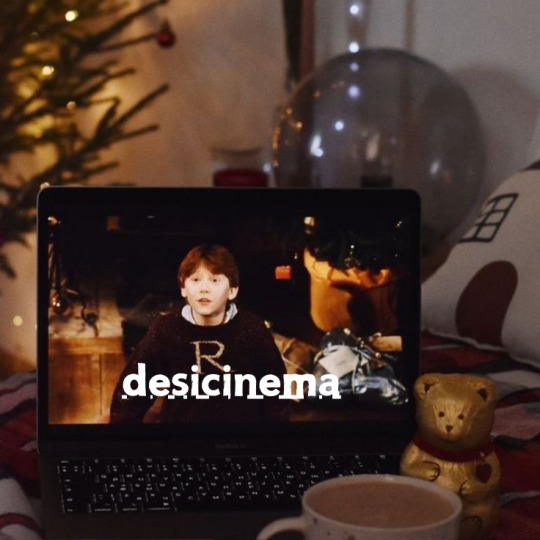
Introduction: No other film industry in the world celebrates music as much as Desi Cinema. Whether it's the grand, orchestrated musical numbers of Bollywood or the soulful ballads in regional films, music is the heartbeat of Indian cinema. In this post, we'll take a deep dive into how music has shaped and defined desicinema, from its early beginnings to modern-day hits.
The Role of Music in the Golden Age:
The 1950s and 1960s were a defining period for Indian film music. Music directors like S.D. Burman, Shankar Jaikishan, and Naushad composed melodies that became immortal. Songs from films like Mughal-e-Azam (1960), Awaara (1951), and Pyaasa (1957) didn’t just complement the narrative but enhanced the emotional depth of the story.
The early Bollywood musicals were often built around the songs themselves. Bollywood songs became a language in their own right, often conveying emotions too complex to be expressed through dialogue. Lata Mangeshkar and Kishore Kumar, the voices of the era, gave life to these songs, making them iconic.
The '70s and '80s: The Rise of Disco & Playback Singing:
The 1970s and 1980s saw an interesting shift in Bollywood’s musical landscape. Disco music entered the scene with tracks like I’m Your Baby Tonight from The Burning Train (1980) and Disco Dancer (1982), marking a more international sound. Meanwhile, playback singers like Kishore Kumar, Mohammad Rafi, and Asha Bhosle dominated the scene, creating songs that were as iconic as the films themselves.
In the 1980s, films like Sholay (1975), Amar Akbar Anthony (1977), and Qurbani (1980) brought forward energetic numbers that resonated with the masses, giving Bollywood a new sound. But it wasn’t just the music; the choreography, the costumes, and the setting also came to define the genre. The popularity of the "item number" emerged around this time, a tradition that continues to define Bollywood today.
The '90s: The Era of Romance and Soundtracks:
The 1990s were marked by an explosion of musical blockbusters. The classic pairing of melodious love songs with visual grandeur became a hallmark of Bollywood during this period. Composers like Jatin-Lalit, Nadeem-Shravan, and A.R. Rahman introduced a range of sounds, from the soulful romantic ballads of Dilwale Dulhania Le Jayenge (1995) to the more contemporary pop-infused melodies of Dil Se (1998).
A.R. Rahman, in particular, revolutionized the industry with his fusion of Western and Indian music, creating scores that broke conventional barriers. His iconic work in Roja (1992) and Taal (1999) not only changed the music industry but also brought a new era of musical experimentation in Indian films.
Modern Day: The Fusion of Genres and Global Influence:
Today, Desi Cinema is characterized by a mix of traditional music with international styles. Composers like Pritam, Amit Trivedi, and A.R. Rahman continue to dominate the soundscape, but the influence of global genres like hip-hop, rap, electronic dance music (EDM), and even reggaeton can be felt in contemporary tracks. Bollywood soundtracks now embrace a wider range of genres, reflecting the evolving tastes of global audiences.
The rise of digital music platforms like Spotify and YouTube has made desicinemas film music more accessible than ever before, allowing audiences to discover and enjoy songs from all over India. In the past decade, regional cinema has seen a rise in musical experimentation as well, with composers like Ilaiyaraaja (Tamil).
Conclusion:
Music is the lifeblood of Desi Cinema. It’s what makes us laugh, cry, and dream alongside our favorite characters. From the majestic orchestral compositions of the 50s to the pulsating beats of today, the role of music in Indian cinema cannot be overstated. In Desi films, music is not just a background element—it’s an essential part of the narrative, blending seamlessly with the story to create an experience that is distinctly Indian, yet universally relatable. Whether you're humming a tune from a Bollywood blockbuster or tapping your feet to a Tamil chartbuster, music continues to be the soul of Indian cinema.
0 notes